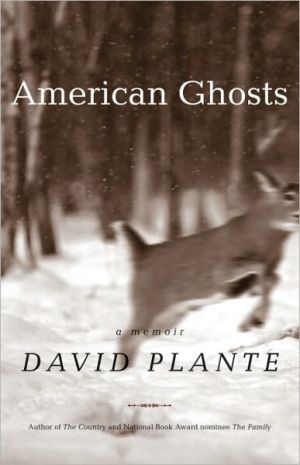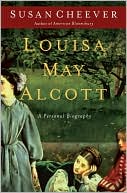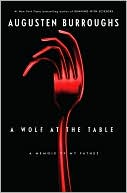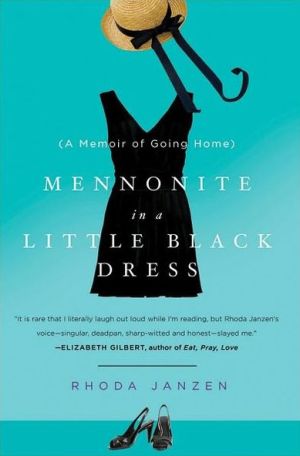American Ghosts: A Memoir
Celebrated novelist David Plante grew up in an isolated, French-speaking community in Providence, Rhode Island, where nuns preserved the beliefs of le grand Canada amidst the profound presence of their deep, dark God. Caught between his silent, part-Blackfoot father and his vivacious but trapped mother, Plante flees this small world, losing his belief in any god and finding the center of his life in love and in writing. Still, the ghosts of his past haunt Plante and drive him to embark on a...
Search in google:
David Plante was born and brought up in a French-speaking Catholic parish in Providence, Rhode Island. The nuns wore black veils and taught the children that they lived in le petit Canada, where they preserved the beliefs of le grand Canada. His part-Blackfoot father was stoic and silent, his mother lively but trapped, and at the center of their difficult lives was a deep, dark God.The ghosts of the parish haunted Plante long after he left home, lost his belief in any god, and found the center of his life both in love and in writing. Finally, Plante comes to terms with his dark God by coming to terms with his ancestry—a stunning spiritual and physical journey that brings him back to Providence, to Canada, to France, and finally to a new understanding of God.“[A] self-scouring undertaken with resolute frankness and considerable stylistic grace.” —Sven Birkerts, New York Times Book Review“Remarkable. And memorable.” —David M. Shribman, Globe and Mail (Canada)“[Plante] offers a strange, mysterious, and deeply hopeful sense of spiritual possibility.” —Commonweal“Emotionally disturbing and spiritually exhilarating.” —Sam Coale, Providence Journal “This wonderful book takes on what may be the hardest questions by allowing this most observant individual to see and hear in miraculous detail. How, it asks, does any person become American, let alone find a place in the breathing cathedral that is this majestic universe?” —Jane Vandenburgh, Boston Globe The New York Times - Sven Birkerts American Ghosts is a memoir full of doubts and hesitations, a self-scouring undertaken with resolute frankness and considerable stylistic grace. The isolation and sorrow that permeate the opening pages are intense enough to saturate the rest of the book. Throughout, Plante shows that, despite the different path his life has taken, he is very much a product of his long-suffering family's ethos, confirming that origins can work on the spirit with a force as strong as gravity.
American Ghosts\ \ By David Plante \ BEACON PRESS\ Copyright © 2005 David Plante\ All right reserved.\ ISBN: 0-8070-7264-8 \ \ \ \ Chapter One\ 1 \ ON OUR WAY TO AND FROM PAROCHIAL SCHOOL, MY younger brother and I walked through a wooded lot between our house and our nearest neighbor. In the spring the thin branches of the trees were leafed in bright green and in the autumn in bright red, and through these branches appeared a big granite boulder that I always paused to look at, and I imagined, from a time long, long past when there were no houses and everywhere was forest, an Indian standing on that boulder and looking back at me. All I knew of my ancestry was that the first to have come to the continent of North America from France would have often seen Indians in the woods.\ A summer night, when the window of my bedroom was wide open and the shadows of trees were cast on the screen, I, in bed with my younger brother, Lenard, who slept deeply, remained wide awake, staring at that window. The fresh nighttime air seething through the screen smelled of wild roses that grew between our narrow yard and the small lot of woods, and also some other smell, perhaps skunk cabbage or skunk, which I thought of as bête puante. Moonlight fell on the trees out there, and I was terrified that, among the rusted automobile fenders and tires dumped in those woods, the ghost of the Indian was hiding and would come up to my window andlook in. My terror became so great that I beat my fists against the headboard until my knuckles were bloody.\ I woke Lenard, who lay still and silent. My mother, followed by my father, came rushing into the room, which was dim in the moonlight through the window. My mother grasped my wrists to stop me from hitting the headboard, then she pulled me out of bed and to the window, where she made me look out into the moonlit woods, repeating over and over, gently, "There's nothing there, nothing, nothing." For me everything was out there, and this everything would at any moment make itself present to me as a face in the darkness. My mother said to my father, who was standing back, "Tell him nothing is out there," but my father, from whom I expected no more or no less, said nothing. Upset for me, my mother insisted, "Tell him."\ Instead, my father said, "I'll sleep with the boy."\ I wanted my mother, her soft body loosely contained by her white, wrinkled nightgown, in bed with me, to reassure me that there was in fact nothing to frighten me in the outside woods, that there was nothing in all the outside world to frighten me. And I wanted, too, my father, wearing the tee shirt and boxer shorts he wore during the day, to be in bed with me, as if his presence allowed me a deeper reassurance than any my mother could have given me: that however terrifying it was, the possibility of that face appearing in the darkness released in me the greatest sense of everything that was most important to me.\ I was seven years old, the age of reason. At times I loved my mother and hated my father; but these times could suddenly be reversed, and I would hate my mother and love my father.\ (This reversal of feelings towards my parents was like the reversals in a dream I often had into my maturity, a nightmare in which at one moment I could not get out of our house because the door was locked and some presence in the house was menacing me, and in the next moment, or even simultaneously, I could not lock the loose, wobbly outside door against a menace from without.)\ "He's got to get over being frightened of the dark," my mother said to my father, still holding my wrists. "For his own sake, he's got to."\ "Yes, yes," my father said.\ She drew me to her to hug me closely, so I felt all her body under her nightgown. "It's for your own good," she said. "You know that."\ Trembling, I said, "I know."\ Now pulling away from me as I held on to her, she said, "I should tell you that you've got to get back into bed with your brother and go to sleep. But I'll let you decide if you want your father or me to sleep with you. Chose one of us, and Lenard will come sleep with the other."\ In a high voice, hardly in control, I said, "Je veux Daddy."\ She took me into the bathroom to wash my hands and wrap gauze around my knuckles, then, back in the bedroom, she told Lenard to get up, and, in his boy's underwear, he went with her to our parents' bedroom.\ I got into bed, my father beside me, and he covered us both. I heard his breathing. He said nothing. He fell asleep.\ This was in 1947, in Providence, Rhode Island.\ 2\ IN THE SIXTH GRADE, WHEN I WAS TWELVE YEARS OLD, our classroom teacher was Mère Sainte Flore. Lenard, now ten, was in the fourth grade. We walked to school together but were separated in the asphalted yard between the church and the school, when Mère Supérieure opened the large black doors to the school and rang the bell. The grades formed ranks with their respective classroom teachers. Mère Sainte Flore stood at the head of our rank and with us listened to Mère Supérieure warn everyone that the girls had to wear blue ribbons and the boys had to wear ties. I wore my tie with a golden tie clip that had a plastic ruby in it. I didn't understand disobedience, and, listening to Mother Superior tell us, in French, that it was forbidden to come to school without the blue ribbon or a tie, I touched my tie clip and felt, a little, that she was warning me not to do something I would never, ever do.\ Mother Superior stood on the granite steps of the school, and as she spoke she held the hand bell among the heavy folds of her long black skirt. She spoke in French and English to make sure everyone understood, as there were a few Italians who came to school in the French parish, and it was mostly the Italians who didn't wear the blue bow or tie and who didn't seem to care that they disobeyed.\ The sleeves of Mother Superior's habit were wide, and when she raised her hands to ring the bell they slipped far up her arm. Under the sleeves were what looked like the tightly fitted black sleeves of an undershirt, and I saw that the tight inner sleeves ended at her white elbows. She lowered the bell, and her outer sleeves fell to cover her hands. She went into the school first.\ As our class filed into the school, Mère Sainte Flore stood back and watched us; then, surprising me, she walked beside me, her arms swinging. She turned to me, her pale face enclosed within a tight, white ruff, and she said, "David," and for a second neither of us moved. Her dark eyes were lined by darker lashes. "David," she said again, and I rushed to catch up to the student ahead of me in the line.\ The seventh-grade classroom was towards the end of the school corridor, its green and brown linoleum tiles highly waxed, and along it large brown doors with transoms. Just beyond the classroom, at the end of the corridor, was a small door, and this led to the convent where the Mothers lived. The door was now open, and I, passing it at a distance, glimpsed a flight of worn wooden stairs that turned as it descended. Someone from inside shut the door.\ In our classroom, in our school, in our parish, in our French fortress surrounded by Yankee territory, we all sang, led by Mère Sainte Flore:\ Ô, Canada, terre de nos aieux, Ton front est ceint des fleurons glorieux-\ We lived in what we called LePetit Canada, where we preserved the beliefs of Le Grand Canada. Le Grand Canada, from which we were so isolated by the surrounding territories that we had lost any contact with it, was an unreal country to me, a country where, according to Mère Sainte Flore, miracles occurred that could never occur in the United States of Yankee America. In Canada was the Church of Sainte Anne de Beauprè, built high up on the side of a mountain, with a view of rivers through forests of pine trees. People went there for miraculous cures. They climbed hundreds of steps on their knees, and they prayed at the church's main altar. Sores were healed, cancers disappeared, malformed arms were restored, and crutches were flung down and left behind, later hung on the walls by the priests. Many Indians from all over Canada, who had a special belief in miracles, made pilgrimages in their canoes along the rivers, rough with rapids, to get to the church.\ I sat towards the center of the class, watching Mère Sainte Flore, who, as much as she wanted to talk about Canada in French, had, in this lesson, to teach us the geography of the United States, and this she must do in English. From time to time she pointed with a stick to a map of the United States -frayed at the edges-that was rolled down over the blackboard.\ Her veil, of a fine, light, black cloth that hung in folds down her back, was held by pins with black, round, shiny heads to a starched white bonnet, which extended all around her face in the ruff, and the bonnet was revealed when-maybe because it had slipped-she put her hands under her veil at the back of her head to adjust it. Then she let her hands drop, and her veil and all her long, loose habit would, with a shake of her head and body, fall into place, the rosary attached to her belt and hanging against her thigh rattling lightly among the black folds. It was odd that though her head was so trussed up with the stiff bonnet, which was sealed tightly under her chin with a snap, her neck was bare. Her white neck, to the inward curve at the base of her throat, was visible, as her habit didn't have a collar.\ She set the end of the pointer on the floor and held it upright like the pole of a flag or standard, and, as if she had had enough of identifying the States of the Union, she continued in French to tell us the truth of the geography of North America. Really, North America, the entire continent, belonged to the French.\ To us, French meant French Canadian, for we were, in our parish, from France by way of French Canada, but at a time when Canada was called La Nouvelle France. Not one of us would have been able to make an ancestral connection beyond Canada to La Vieille France. Yet we called ourselves French in the way Italians in our school called themselves Italians, or in the way the parishioners of the Irish parish called themselves Irish or those of the Polish parish called themselves Polish. Unlike these others, however, who were able to make connections with their old countries that went no further back than their immigrant grandparents, we French knew-were told by Mère Sainte Flore-that, with our ancestry reaching back to so long ago it was beyond memory, we were the first Europeans to discover North America. She told us about how Cartier planted the cross and French standard on North American soil in 1534, and how Champlain founded the city of Quebec in 1608. And Champlain was the first to claim Maine, which was named in honor of Henriette de France, duchesse du Maine, and also Massachusetts, both parts of La Nouvelle France but later taken over by the English and called New England. The state of New York, too, was once French, with its French capital at New Rochelle, and Manhattan was called Nouvelle-Avesnes before it was taken by the Dutch and called New Amsterdam. The state now called Pennsylvania was French, and the southern states and all of the Midwest was French, for French forts were established all along the Mississippi River, which was discovered by the Frenchman Jacques Marquette. We were told of his explorations, and those of Louis Jolliet and his claim to have discovered the Mississippi River, and of René-Robert Cavalier, Sieur de la Salle, who discovered the Ohio River. The French missionaries were the first to enter into the camps of Indian tribes never before seen by Europeans; and these missionaries learned the Indian languages and baptized the Indians Catholics. And there was the whole of Louisiana, which, Mère Saint Flore lamented, was sold to the United States for fifteen cents an acre.\ The class, even the Italians in it, became silent with attention, for Mère Sainte Flore seemed to begin to sing, her eyes for a moment closed, when she went on to talk about the long, long past French continent. We had lost that French continent, but even if we did not know its history, it remained an invisible presence to us, in the same way that what is invisible is more of a presence to us than what is visible. We may try to see the invisible, and may, at moments, see it in a slouch hat with a plume or a lace fan, in a stone arrowhead, or in a beaver pelt, but it cannot be made visible, as much as we try.\ The invisible was like that lost French colony, founded on the continent long before any other European colony was founded, which Mère Sainte Flore liked to remind us of. The French colonists constructed a palisade and dug a moat around it, and houses of wood and earth, with roofs of straw, were built inside. It was called Charlesfort, after the then king of France, Charles IX, who was twelve years old. The colony disappeared-no one knew how or why-and the only evidence that it had once existed in the New World was the word of the only survivor, a boy named Ruffi, who ran away, took refuge among the Indians, and later told a Spanish expedition about the French fort, but he couldn't say why or how it had disappeared, and he couldn't say where it had been. To this day, no one knew.\ At moments, I had a strange feeling that Mère Sainte Flore kept looking at me, and I wondered if I had done something wrong. I touched the plastic ruby on my tie clip.\ At the end of the morning classes, the school bell was rung in the corridor, and the classes, one after another, filed out into the school yard, where, again, Mother Superior warned us all to tell our parents that it was forbidden to come to school without the blue ribbon or a tie. Then the classes marched down the hill, past the brick church, to the crossroads where there was a drugstore and a hairdresser and a grocery store, and from there the classes dispersed into the parish in different directions, and my brother and I met to walk home together. But he went ahead when I stopped at the wide window of the drugstore, which reflected, behind me, the Mothers walking back up the hill to the school. Their long black skirts swung, and their veils billowed a little with the movement of their heads as they talked to one another. One of them fell behind the others and walked slowly. I knew this was Mère Sainte Flore. I waited until she had walked off the edge of the glass.\ It was autumn, and on our walk home, Lenard and I passed fires of fallen maple leaves burning at the curbsides of the narrow, almost trafficless streets, the smoke rising up into the branches of the large maple trees lining the sidewalks, the branches still dropping red leaves.\ Home was a white clapboard bungalow up the hill from the factory where my father worked. My mother ironed while Lenard and I ate our sandwiches and drank glasses of milk at the kitchen table.\ \ Continues...\ \ \ \ Excerpted from American Ghosts by David Plante Copyright © 2005 by David Plante. Excerpted by permission.\ All rights reserved. No part of this excerpt may be reproduced or reprinted without permission in writing from the publisher.\ Excerpts are provided by Dial-A-Book Inc. solely for the personal use of visitors to this web site. \ \
\ Sven BirkertsAmerican Ghosts is a memoir full of doubts and hesitations, a self-scouring undertaken with resolute frankness and considerable stylistic grace. The isolation and sorrow that permeate the opening pages are intense enough to saturate the rest of the book. Throughout, Plante shows that, despite the different path his life has taken, he is very much a product of his long-suffering family's ethos, confirming that origins can work on the spirit with a force as strong as gravity.\ — The New York Times\ \ \ \ \ Publishers WeeklyHaunted by the visible and invisible spirits of his life, Plante embarks on a remarkable journey of self-discovery. Traveling through a past littered with the ghosts of his ethnic lineage (French Canadian), his family heritage, his sexuality and his writing life, he searches to make sense of his spiritual longings and his physical desires. Plante (Difficult Women, etc.) was raised in a French Catholic parish in Providence, R.I., and his earliest memories revolve around his parochial school days, where the nuns sent mixed messages of religious piety and physical longing. Throughout his childhood and adolescence, Plante struggles to fulfill his longings to find God and to understand his family's religious and geographical roots. During his college years, he abandons the search for the God of his childhood, believing any picture of God must allow for the sensual as well as the spiritual. After college, he journeys across Europe, trying to find a way to express his sensual and spiritual longings, discovering that in writing he's found a way to name the pull between the religious and the physical. For Plante, writing becomes a spiritual activity that allows him to understand himself, his family and the world around him. Not so much a memoir as a beautiful diary of the making of a writer, Plante's evocative work hauntingly resurrects the ghosts residing in his life. (Jan. 2005) Copyright 2004 Reed Business Information.\ \ \ Library JournalAccomplished writer, teacher, and National Book Award nominee Plante begins his memoir in 1947 with his fear that the ghost of an American Indian lurks in the darkness outside of his bedroom window in Providence, RI. His mother and father take turns comforting him, but neither fully succeeds. Troubled by his failure to understand his parents and by the isolation of life in a small French Catholic parish, Plante searches for answers in Spain, England, and, ultimately, France, the home of his ancestors. He chronicles his struggles with the ghosts of his family's past, including that of a great-grandmother who was a Blackfoot Indian, as well as with his relationship to God. Throughout, Plante explores the dichotomies within himself as well as the importance of his relationship with his lover, Nikos, using pulsating imagery to present an intensely personal glimpse into the psyche of a man and a writer. Recommended for academic libraries. Anthony J. Pucci, Notre Dame H.S., Elmira, NY Copyright 2004 Reed Business Information.\ \ \ \ \ Kirkus ReviewsFrom novelist Plante (The Age of Terror, 1999, etc.), an often-lyrical memoir of religion lost, sexual identity discovered, vocation found, and near-madness born of obsession. This time out, Plante crafts a coming-of-age story that's often surprising and illuminating, but sometimes conventional and even a tad dull. The author, who has Blackfoot ancestors, begins when he's seven and afraid of the ghost of an Indian he imagines seeing in the neighborhood woods, and he ends with accounts of a close friend, novelist Mary Gordon, attempting to help him rediscover his Catholicism, and of his journeys to France in search of the burial records of some 17th-century Plantes. The boyhood portions are striking, none more so than the memory of a nun at school who appears to have an attraction for the young student. Helping him dress for a school play, she lightly touches the nape of his neck: "My body began to shake." His body shakes later on, too, especially when, during a college year abroad, he hooks up with his first gay sex partner, a strange man named Oci. The pair travel around Europe together, and much later Oci dies of what seems to be AIDS. Plante eventually finds his permanent partner, a young Greek named Nikos, and then discovers that he is flirting with insanity as he tries to understand the images that haunt him. For a time, he records them in a journal at night, one image per page; after two years, he has 650 pages. What do they mean? Why do they keep him awake? Why does he write so obsessively that even Nikos has trouble getting his attention? Like several other memoirists, Plante assumes that substantial passages from his journals or commonplace books are interesting when often theyaren't. The final short passage, a French prayer once overheard, suggests that he has achieved a sort of epiphanic peace. A talented writer wrestles with demons, endeavoring to define and thus restrain-if not defeat-them. Agent: Sterling Lord/Sterling Lord Literistic\ \








